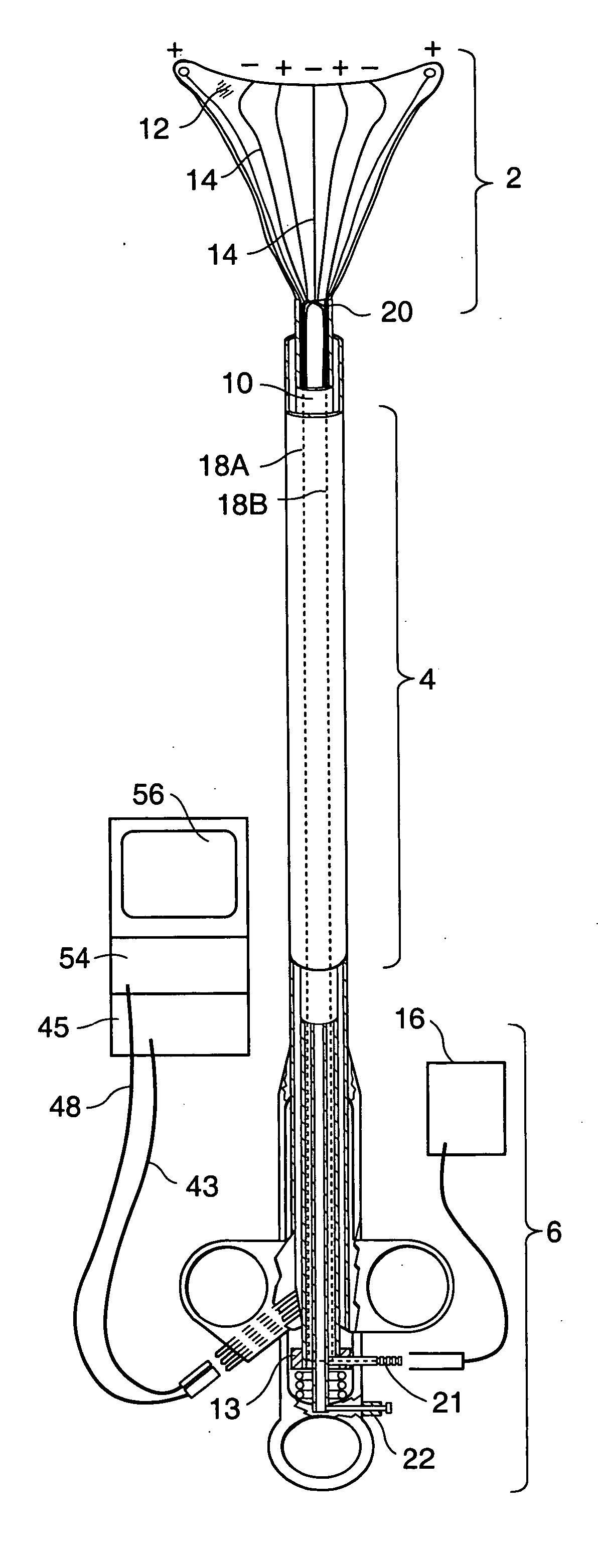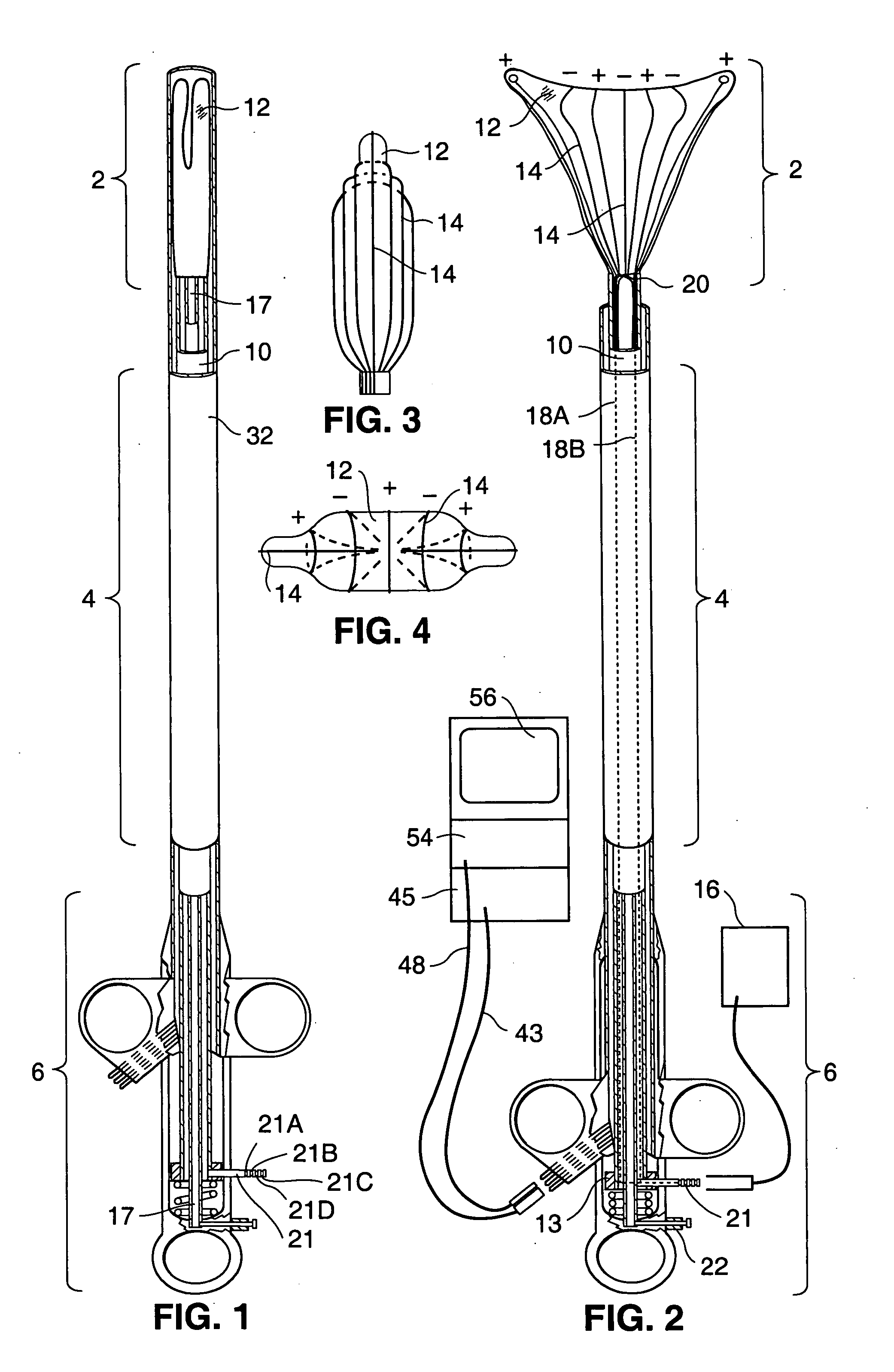Moisture transport system for contact electrocoagulation
a technology of moisture transport system and electrocoagulation, which is applied in the field of apparatus and methods for ablating or coagulating the interior surfaces of body organs, can solve the problems of ineffective heating process, inability to account for factors, and inability to achieve the ablation depth and ablation profile of such devices,
- Summary
- Abstract
- Description
- Claims
- Application Information
AI Technical Summary
Problems solved by technology
Method used
Image
Examples
first exemplary embodiment
[0054] Structure
[0055] Referring to FIGS. 1 and 2, an ablation device according to the present invention is comprised generally of three major components: RF applicator head 2, main body 4, and handle 6. Main body 4 includes a shaft 10. The RF applicator head 2 includes an electrode carrying means 12 mounted to the distal end of the shaft 10 and an array of electrodes 14 formed on the surface of the electrode carrying means 12. An RF generator 16 is electrically connected to the electrodes 14 to provide mono-polar or bipolar RF energy to them.
[0056] Shaft 10 is an elongate member having a hollow interior. Shaft 10 is preferably 12 inches long and has a preferred cross-sectional diameter of approximately 4 mm. A collar 13 is formed on the exterior of the shaft 10 at the proximal end. As best shown in FIGS. 6 and 7, passive spring member 15 are attached to the distal end of the shaft 10.
[0057] Extending through the shaft 10 is a suction / insufflation tube 17 (FIGS. 6-9) having a plur...
second exemplary embodiment
[0106] Structure
[0107] A second embodiment of an ablation device 100 in accordance with the present invention is shown in FIGS. 21-37B. The second embodiment differs from the first embodiment primarily in its electrode pattern and in the mechanism used to deploy the electrode applicator head or array. Naturally, aspects of the first and second exemplary embodiments and their methods of operation may be combined without departing from the scope of the present invention.
[0108] Referring to FIGS. 21 and 22, the second embodiment includes an RF applicator head 102, a sheath 104, and a handle 106. As with the first embodiment, the applicator head 102 is slidably disposed within the sheath 104 (FIG. 21) during insertion of the device into the uterine cavity, and the handle 106 is subsequently manipulated to cause the applicator head 102 to extend from the distal end of the sheath 104 (FIG. 22) and to expand into contact with body tissue (FIG. 33).
[0109] RF Applicator Head
[0110] Referri...
PUM
 Login to View More
Login to View More Abstract
Description
Claims
Application Information
 Login to View More
Login to View More - R&D
- Intellectual Property
- Life Sciences
- Materials
- Tech Scout
- Unparalleled Data Quality
- Higher Quality Content
- 60% Fewer Hallucinations
Browse by: Latest US Patents, China's latest patents, Technical Efficacy Thesaurus, Application Domain, Technology Topic, Popular Technical Reports.
© 2025 PatSnap. All rights reserved.Legal|Privacy policy|Modern Slavery Act Transparency Statement|Sitemap|About US| Contact US: help@patsnap.com



